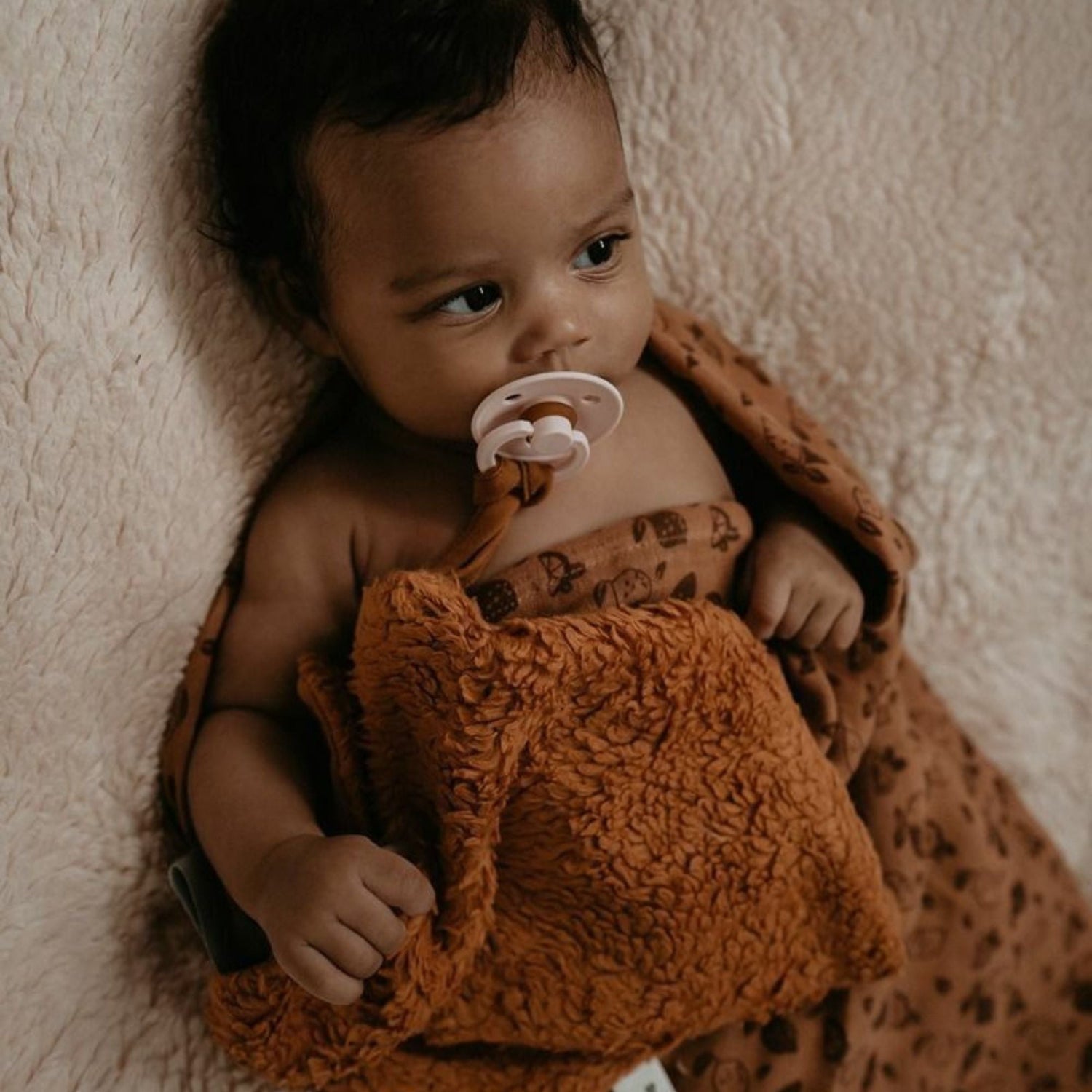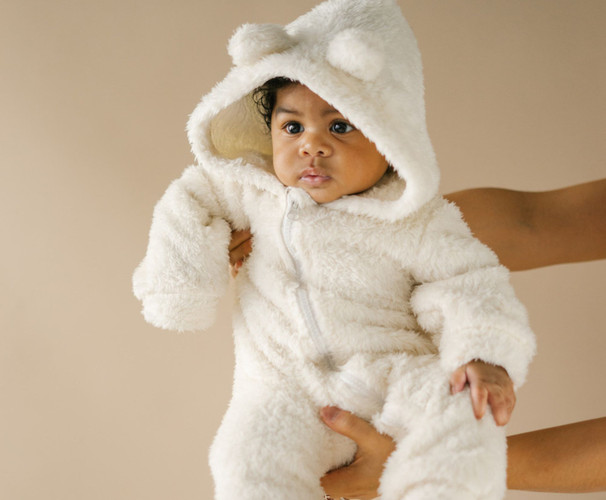Blz baby clothes deliver trustworthy quality
Everything About Baby Garments: Comprehending the Benefits of Comfortable Fabrics
Choosing proper materials for child garments is crucial for their convenience and total advancement. Soft, breathable products like cotton and bamboo are favored for their gentle touch on delicate skin. Additionally, the fit of baby clothes plays a significant function in allowing movement. Comprehending these variables can significantly influence an infant's experience in their onset. What considerations should parents remember when picking the ideal options for their little ones?
The Significance of Comfort in Infant Apparel
When choosing infant garments, comfort becomes an important element that can not be neglected. Babies have delicate skin and are especially conscious pain, which can lead to fussiness and rest disturbances. The appropriate garments permits simplicity of activity, vital for their all-natural advancement as they begin to explore their environments. Parents commonly focus on soft joints, adjustable features, and breathable materials to assure their babies stay comfy throughout the day.
Moreover, apparel that is simple to put on and take off streamlines clothing routines, decreasing stress for both babies and parents. The value of comfort extends beyond the physical; it adds to a baby's overall health and happiness. Picking garments that prioritize comfort fosters a favorable atmosphere for development and expedition - Blz baby clothes. Ultimately, comprehending the value of convenience in infant apparel can bring about much better choices that support an infant's requirements during these developmental months
Recognizing Textile Types: Cotton, Bamboo, and A lot more
Choosing the appropriate material for baby clothing plays a considerable duty in making sure comfort. Numerous fabric types offer distinctive features that can affect a baby's experience. Cotton, for instance, is a popular choice because of its breathability and soft qualities, making it mild against fragile skin. It is also sturdy and easy to clean, contributing to its charm for moms and dads.
Bamboo textile is an additional exceptional alternative, understood for its eco-friendliness and moisture-wicking buildings. It helps control temperature level and keeps children dry, which can be especially helpful during warmer months. In addition, bamboo is normally hypoallergenic, decreasing the danger of inflammation for sensitive skin.
Other textiles, such as linen and modal, also contribute distinct benefits. Bed linen is breathable and light-weight, while modal is soft and resistant to diminishing. Comprehending these fabric types can assist moms and dads make educated options for their baby's closet, advertising convenience and wellness.
The Benefits of Soft Cotton for Child Skin
Soft cotton is usually hailed as the suitable material for child garments, primarily due to its mild touch versus sensitive skin. This natural fiber is hypoallergenic, making it a secure selection for babies vulnerable to allergic reactions or breakouts. Unlike synthetic fabrics, soft cotton allows for much better air flow, lowering irritability and pain throughout wear. Its moisture-wicking homes help to keep infants completely dry, which is crucial for preventing diaper breakout and various other skin concerns.
Additionally, soft cotton is highly durable and can hold up against frequent washing, making sure that garments continue to be in good problem over time. The textile's breathability adds to total convenience, enabling infants to relocate freely without restriction. In addition, its softness improves with each wash, enhancing the experience for both parents and their children - Blz baby clothes. On the whole, soft cotton supplies an excellent mix of comfort, safety and security, and functionality for baby clothes, making it a recommended choice amongst caregivers
Exploring Breathable Fabrics for Temperature Level Guideline
Breathable materials play an essential duty in managing a child's body temperature, complementing the comfort offered by soft cotton. These products allow air to distribute, preventing overheating during warmer months and preserving warmth in cooler conditions. Fabrics such as bed linen, bamboo, and moisture-wicking blends are especially effective in maintaining an excellent microclimate for infants.
Bed linen, recognized for its natural breathability, helps wick away moisture, maintaining infants completely dry and comfy. Bamboo, on the various other hand, provides a soft texture together with exceptional thermoregulating properties, making it a prominent option for sleepwear.
Moisture-wicking blends draw sweat away from the skin, making certain infants remain comfortable even throughout energetic play. Selecting garments made from breathable textiles not only enhances the child's comfort however additionally adds to overall health, making it an essential consideration for caregivers when picking child apparel.
Natural vs. Synthetic Products: What to Pick?
When selecting child clothes, the selection between all-natural and artificial products increases essential considerations. Aspects such as breathability, convenience, toughness, and environmental influence play a vital function in this decision. Parents should evaluate these elements to ensure the most effective choices for their child's needs and the earth's health and wellness.
Breathability and Comfort
Selecting the best products for infant clothing significantly affects a youngster's comfort and total well-being. Breathability is a crucial element in guaranteeing that infants remain comfy throughout the day. Natural fabrics, such as cotton and linen, are known for their superior breathability, permitting air flow and wetness absorption. This assists regulate an infant's body temperature level, maintaining them cool in warm conditions. On the other hand, synthetic products, while often more cost effective and readily available in different styles, may catch warm and moisture, potentially creating discomfort. Parents ought to take into consideration the environment and their infant's skin level of sensitivity when selecting textiles. Inevitably, focusing on breathable, soft materials will certainly improve a baby's comfort and support healthy skin advancement.
Durability and Longevity
While convenience is essential, the resilience and long life of baby garments are equally crucial aspects for moms and dads to consider. When choosing in between artificial and all-natural products, moms and dads need to consider the advantages of each. Natural textiles like cotton and linen are typically commended for their soft qualities and breathability, making them comfortable versus an infant's delicate skin. They may use out quicker, particularly with constant cleaning. On the other hand, synthetic products such as polyester and nylon can supply boosted sturdiness and resistance to reducing or fading, making them a sensible selection for energetic infants. Inevitably, choosing the right check it out fabric includes stabilizing comfort with the requirement for garments that can endure the roughness of daily deterioration, guaranteeing they last through several usages.
Environmental Effect Factors To Consider
The environmental impact of infant clothes is increasingly coming to be a significant consideration for parents. When selecting between artificial and all-natural products, moms and dads frequently consider the ecological footprint of each choice. Natural fibers, such as natural cotton and bamboo, are biodegradable and typically produced with less damaging chemicals, making them much more lasting options. In contrast, synthetic materials like polyester and nylon are stemmed from oil, adding to pollution and microplastics in oceans. Artificial fabrics can use longevity and moisture-wicking buildings, which may be beneficial for energetic babies. Ultimately, moms and dads should stabilize environmental worry about the sensible demands of their babies, thinking about variables such as convenience, treatment, and long life while going for environment-friendly selections in their infant's closet.
Influence of Textile on Infant's Mood and Health
The choice of fabric in infant clothes substantially affects a kid's state of mind and overall well-being. Breathable and comfy products can enhance a baby's comfort, while sensory-sensitive infants may respond adversely to extreme or artificial materials. Understanding these variables helps caregivers select ideal garments that sustains a positive psychological setting.
Textile Breathability and Comfort
Choosing breathable fabrics for child clothes is crucial, as it substantially influences a child's comfort and total mood. Breathable products, such as cotton and linen, permit air flow, helping to manage the child's body temperature level. This is specifically essential to stop overheating, which can lead to irritation and uneasyness. They are extra likely to be tranquil and content when infants really feel comfortable in their garments. On the other hand, non-breathable textiles can catch warmth and wetness, creating discomfort and possible skin irritations. Focusing on breathable choices not just boosts physical well-being however additionally adds to a much more positive mood. Choosing the best textile is crucial for promoting a supporting environment that supports an infant's advancement and joy.

Sensory Level Of Sensitivity Factors To Consider
Textile selections not just affect breathability however additionally play a critical duty in a child's sensory experience. Babies are especially conscious appearances, and the ideal textile can improve their comfort and total mood. Soft, all-natural materials like cotton and bamboo are often favored, as they provide a mild touch versus the skin, minimizing inflammation. Conversely, rough or artificial textiles might bring about discomfort, motivating fussiness or distress. This sensitivity can affect exactly how a baby interacts with their environment. Parents need to be mindful of material selection, as it can significantly influence a child's emotional well-being. Eventually, selecting comfy fabrics is important for advertising a favorable sensory experience, adding to a happy and happy infant.
Tips for Choosing the Ideal Child Clothes for Convenience
When picking child clothes for comfort, moms and dads ought to focus on soft, breathable materials to ensure their child remains comfortable throughout the day. Fabrics like cotton and bamboo are exceptional options, as they permit for airflow and minimize irritation versus delicate skin.
Furthermore, moms and dads ought to take into consideration the fit of the clothing; loose-fitting garments supply ample room for activity, making certain that babies can explore without restriction.

Parents must also take into consideration the climate; layering choices are valuable for fluctuating temperatures, enabling simple modification.
Finally, choosing user friendly bolts, such as breaks or zippers, can streamline dressing and diaper adjustments, additionally improving comfort. By concentrating on these aspects, moms and dads can develop a comfy closet that sustains their child's well-being and development.
Often Asked Concerns
How Commonly Should I Laundry My Infant's Garments?
Specialists recommend cleaning a child's clothes after every wear, particularly if they come to be soiled. For delicate skin, staying clear of and using gentle cleaning agents textile softeners is recommended to maintain textile stability and reduce inflammation dangers.
What Sizes Should I Purchase For My Growing Infant?
For an expanding child, it is recommended to acquire dimensions that suit their current age and weight, choosing a size bigger when doubtful. This ensures convenience and long life as they remain to expand.
Are There Infant Garments Suitable for Sensitive Skin?
Yes, there are baby clothes designed particularly for sensitive skin. These garments generally feature soft, breathable products like organic cotton and avoid severe dyes or chemicals, making sure comfort and lowering hop over to here the threat of inflammation for delicate skin.
Can Child Garments Be Securely Dried Out in a Clothes dryer?
Baby clothing can generally be securely dried in a dryer, yet it is vital to examine treatment labels. Making use of a low warmth setting aids stop shrinking and preserves the stability of the textile.
How Can I Tell if Child Garments Fit Properly?
To figure out appropriate suitable for child clothes, one need to look for snugness without limiting activity, guarantee seams line up with shoulders and crotch, and validate that garments enables for easy undressing and dressing without extreme tightness. Blz baby clothes.
Selecting ideal textiles for infant clothing is necessary for their convenience and total development. Picking the appropriate textile for infant clothing plays a considerable role in guaranteeing convenience. Breathable materials play an essential role in controling an infant's body temperature, enhancing the comfort offered by soft cotton. Breathable and comfortable check over here materials can boost a child's comfort, while sensory-sensitive babies might react negatively to extreme or synthetic textiles. Picking breathable fabrics for child clothes is important, as it significantly influences a youngster's comfort and general state of mind.